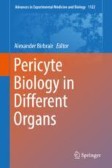Search
Search Results
-
Serum lipid metabolism characteristics and potential biomarkers in patients with unilateral sudden sensorineural hearing loss
BackgroundGlycerophospholipids (GPLs) are essential for cell membrane structure and function. Sphingomyelin and its metabolites regulate cell growth,...

-
Natural products: protective effects against sensorineural hearing loss
Hearing loss is one of the major public health problems in the world, which brings huge adverse effects to individuals and society. Sensorineural...

-
Advances in the Study of Etiology and Molecular Mechanisms of Sensorineural Hearing Loss
Sensorineural hearing loss (SNHL), a multifactorial progressive disorder, results from a complex interplay of genetic and environmental factors, with...

-
Spectral Characteristics of Cardinal Vowels as Indicators of the Auditory Speech Feedback Control in Patients with Moderate and Moderately Severe Chronic Postlingual Sensorineural Hearing Loss
AbstractChronic sensorineural hearing loss (SNHL) is characterized by an increase in hearing thresholds at basic speech frequencies, which implies...

-
Hearing loss and vestibular schwannoma: new insights into Schwann cells implication
Hearing loss (HL) is the most common and heterogeneous disorder of the sensory system, with a large morbidity in the worldwide population. Among...

-
The protective effects of systemic dexamethasone on sensory epithelial damage and hearing loss in targeted Cx26-null mice
Mutations in the GJB2 gene (encoding Connexin26(Cx26)) are the most common cause of hereditary deafness, accounting for about a quarter of all cases....

-
Deafness gene screening based on a multilevel cascaded BPNN model
Sudden sensorineural hearing loss is a common and frequently occurring condition in otolaryngology. Existing studies have shown that sudden...

-
Mesenchymal stem cells for sensorineural hearing loss: a systematic review of preclinical studies
Sensorineural hearing loss (SNHL) is the most common form of hearing loss that is routinely treated with hearing aids or cochlear implants. Advances...

-
The atherogenic index (ATH index) as a potential predictive marker of idiopathic sudden sensorineural hearing loss: a case control study
BackgroundThe importance of blood lipids in the pathogenesis of sudden sensorineural hearing loss (SSNHL) is widely discussed in the literature....

-
Exome sequencing of families from Ghana reveals known and candidate hearing impairment genes
We investigated hearing impairment (HI) in 51 families from Ghana with at least two affected members that were negative for GJB2 pathogenic variants....

-
Childhood-related neural genotype–phenotype in ATP1A3 mutations: comprehensive analysis
BackgroundATP1A3 is a gene that encodes the ATPase Na + /K + transporting subunit alpha-3 isoenzyme that is widely expressed in GABAergic neurons....

-
Fibrinogen to HDL-Cholesterol ratio as a predictor of mortality risk in patients with acute myocardial infarction
BackgroundAcute myocardial infarction (AMI) is characterized by inflammation, oxidative stress, and atherosclerosis, contributing to increased...

-
Target Organs of Metals Released from Metal-on-Polyethylene Knee and Hip Arthroplasty Implants: Implications for Tissue Metal Profiles
Metals are used in orthopedic implants. The wear of arthroplasty implant can lead to the release of arthroprosthetic metals, both locally and...
-
The Impact of Chronic Magnesium Deficiency on Excitable Tissues—Translational Aspects
Neuromuscular excitability is a vital body function, and Mg 2+ is an essential regulatory cation for the function of excitable membranes. Loss of Mg 2+ ...

-
Gene Editing Technologies Targeting TFAM and Its Relation to Mitochondrial Diseases
Mitochondria are organelles present in the cytoplasm of eukaryotic cells; they play a key role in adenosine triphosphate (ATP) synthesis and...
-
Auditory function and dysfunction: estrogen makes a difference
Estrogen is the major female hormone involved in reproductive functions, but it also exerts a variety of additional roles in non-reproductive organs....

-
Miscellaneous CNS Viral Infections: Underappreciated Causes of Neurologic Disease
Lymphocytic choriomeningitis virus (LCMV) is from the family, Arenaviridae, having single- stranded RNA genome. Adult lymphocytic choriomeningitis...
-
Cochlear Capillary Pericytes
Capillary pericytes in the cochlea of mammals are—compared to pericytes in other tissues, like the CNS—relatively poorly researched. To begin with,...
-
From the regulatory mechanism of TFEB to its therapeutic implications
Transcription factor EB (TFEB), known as a major transcriptional regulator of the autophagy-lysosomal pathway, regulates target gene expression by...

-
Advances in monolingual and crosslingual automatic disability annotation in Spanish
BackgroundUnlike diseases, automatic recognition of disabilities has not received the same attention in the area of medical NLP. Progress in this...

